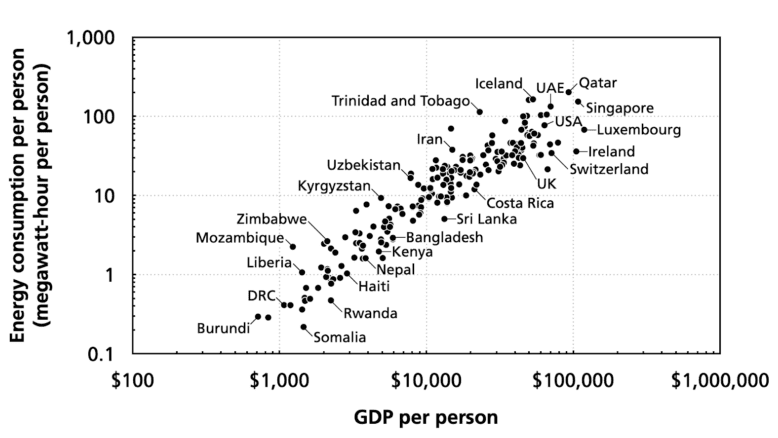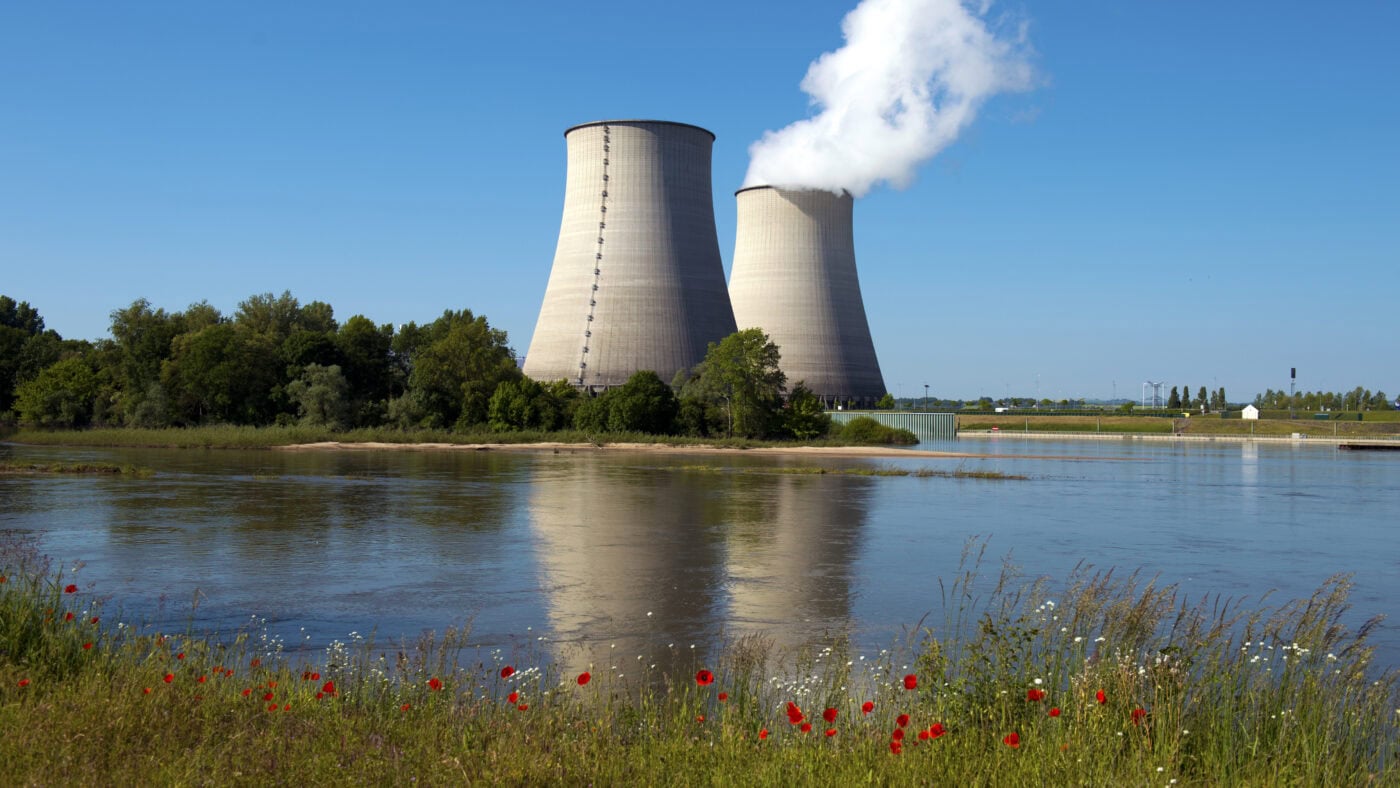Energy is the great enabler. It comforts us by cooling our offices in summer and heating our homes in winter; it nourishes us by synthesising fertilisers and purifying water; it raises our infrastructure by forging steel and melting silicon into glass; it connects the world by mobilising cars, trains, and aeroplanes; it generates electricity, that quiet miracle of convenience on which society grows ever-more dependent. And it will enable tomorrow’s technologies, such as AI and green hydrogen. Energy underpins all the material things we value.
Indeed, energy and prosperity are so closely linked that you can predict with astonishing accuracy a nation’s GDP per capita from its energy consumption per capita. The two rise in near-perfect lockstep.

.
Energy abundance and economic prosperity are tightly coupled. Making as much energy as possible for as many people as possible is vital if we’re to elevate living standards, eliminate poverty and grow economies. Look after the megawatt-hours, and prosperity will take care of itself.
But this energy mustn’t come at the planet’s expense. Dirty energy supplies – namely coal, oil, and gas – are responsible for three-quarters of our global greenhouse gas emissions. Meanwhile, air pollution from foul fuels kills almost 9 million people annually, making it the fourth-biggest killer after tobacco, high blood pressure and malnutrition. Harvesting the energy society needs to function while lightening our burden on the environment is a defining challenge of the 21st century.
Renewables are a good place to start. Across Europe, we’ve made great strides in phasing out coal – the dirtiest fossil fuel – and increasing generation from wind and solar; coal dropped from 27% of Europe’s grid in the year 2000 to 13% today, and wind and solar rose from essentially nothing to almost 20% over the same period. But wind and solar don’t ‘replace’ fossil fuels, per se; they merely ‘displace’ them while they’re working, which – since they’re tied to the weather and day-night cycle – they often don’t. Storage solutions, while much hyped, aren’t the answer: they work over minutes and hours, while renewables can falter for days and weeks at a time.
Now, don’t get me wrong. I don’t want to live in a world devoid of wind turbines and solar panels. But they’re not enough on their own to provide clean energy in the quantities we need, exactly when we need it. To decarbonise our economies sensibly requires something clean, potent, and – crucially – reliable to compensate for wind and solar’s intermittence.
Nuclear power can help us realise that ambition. It’s ‘dispatchable’ – energy industry parlance for ‘always on’ – and powerful, with a single nuclear reactor easily capable of churning out 12m megawatt-hours of electricity annually, enough for 2m Brits. And, with a mind to decarbonisation, it’s about as emissions-free as it gets: taking into account mining, fuel fabrication, power plant construction, et cetera, a megawatt-hour of nuclear electricity emits the same amount of carbon dioxide as one from wind.
Despite perceptions to the contrary, nuclear power is the most environmentally friendly way to generate electricity by virtually every metric. It uses the least amount of land, requires the least amount of mining and has the lightest ecological footprint of any power source. A full consideration of nuclear’s safety record – expressed in fatalities per megawatt-hour – reveals it to be as harmless as wind and solar.
Nuclear power is about as win-win as it gets. Those preoccupied with economic growth and energy abundance get what they want; those preoccupied with environmental issues get what they want. Of course, most of us are in the middle of the Venn diagram: we want a world that’s more prosperous and sustainable at the same time.
And this has been done before. The best example is France, which built 55 reactors between 1973 and the year 2000, with a median build time of just six years. In the mid-noughties – the apex of French nuclear electricity generation – nuclear power satisfied a whopping 80% of France’s electricity demand. France almost entirely decarbonised its grid accidentally, long before climate change became the hot topic it is today. Today, France has some of the cleanest electricity in Europe and pays less than the European Union average for it.
Doom and gloom saturate our conversations about decarbonising the economy. The future is often presented as a choice between economic prosperity and environmental sustainability. But this either-or way of thinking is a false dichotomy. We must have both. And we can with nuclear power.
We’ve been splitting atoms in nuclear reactors for longer than we’ve known we were causing the climate to change. The science is sound, and the technology is proven. All we need is the will to implement it across society to its full potential.
Tim Gregory’s new book, ‘Going Nuclear: How the Atom will Save the World’, is published this week by Bodley Head.
Click here to subscribe to our daily briefing – the best pieces from CapX and across the web.
CapX depends on the generosity of its readers. If you value what we do, please consider making a donation.


